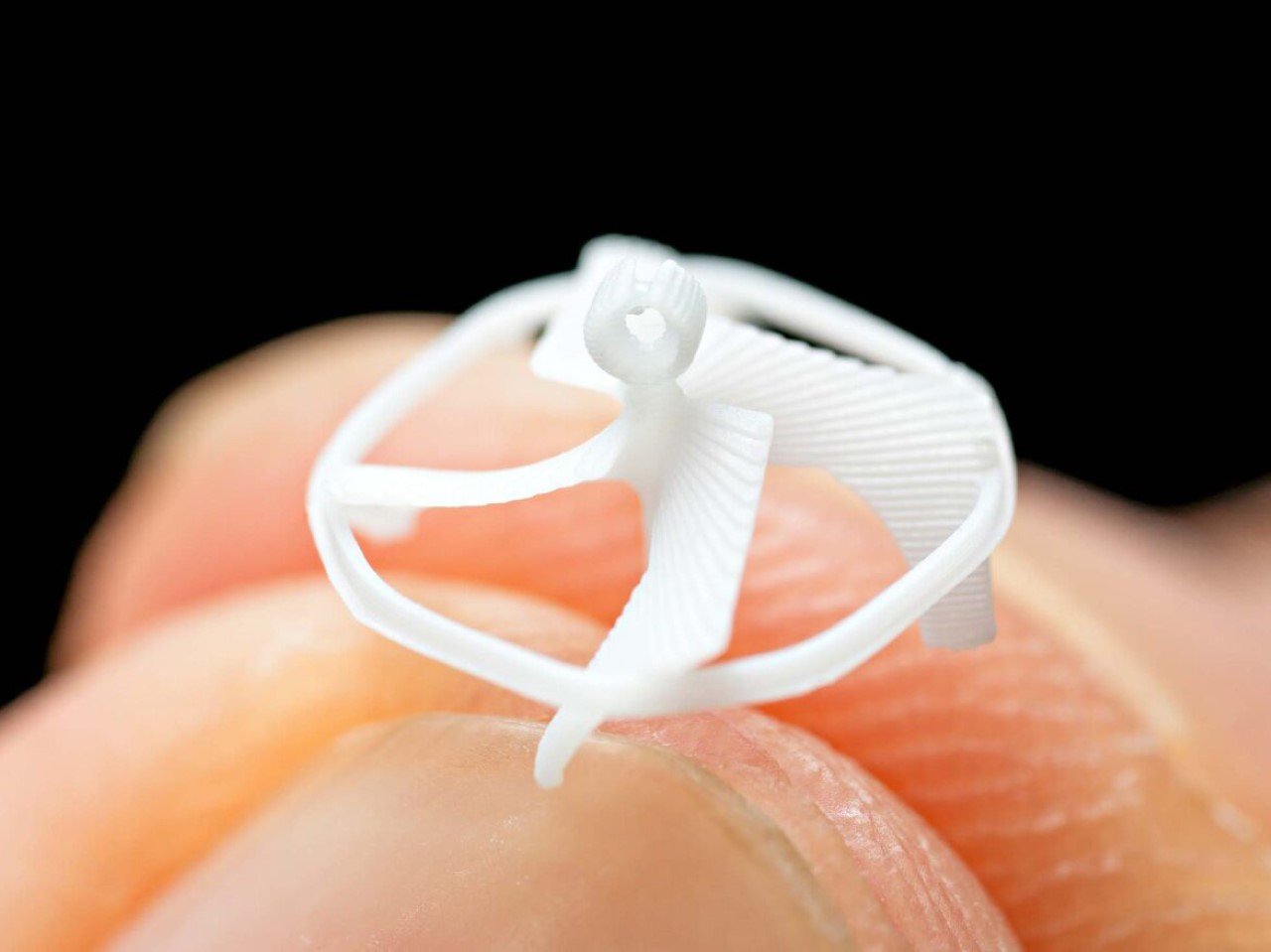Back when we imagined the future, flying robots were always loud, blinking, and somehow armed — straight out of a ‘90s sci-fi flick. The reality, as it turns out, is much quieter, more delicate, and surprisingly elegant. UC Berkeley’s latest creation, the world’s smallest battery-free flying robot, feels less like a Hollywood prop and more like a clever remix of nature’s own engineering. At just 21 milligrams — about a third the weight of a honeybee — this minuscule marvel floats, hovers, and navigates without a single battery on board.
Instead of flapping wings or spinning rotors, this insect-inspired robot runs on magnetic fields. Its tiny two-magnet system acts as both its propeller and flight controller. Externally applied magnetic fields make the magnets spin, generating lift and allowing precise steering by simply adjusting the field’s strength and direction. Watching it operate is like seeing physics play out in real-time — a mechanical bee, driven not by electronics, but by the invisible hand of magnetism.
Designers: Wei Yue, Liwei Lin, UC Berkeley
Small robots have been around for years – the real puzzle was ditching the battery. Batteries, even the smallest ones, weigh too much to make insect-scale flight viable. UC Berkeley’s solution bypassed power storage entirely, leaning instead on wireless energy input. By offloading the power source to an external magnetic field, the team opened up a range of possibilities that bulky batteries would have shut down immediately. The result is a fully wireless micro-robot that can hover in place, dart to a target, or navigate tight, cluttered spaces.
It’s hard not to smile at how closely this robot mirrors its biological inspiration. Like bees pollinating flowers, the micro-robot can be directed to bump into tiny targets with surprising precision — a skill that could be vital for delicate tasks like artificial pollination, environmental monitoring, or navigating wreckage during search-and-rescue missions. It may not yet have the onboard intelligence of its insect cousins, but its ability to move and interact with its environment at this scale is impressive in its own right.
At 0.9 centimeters in diameter, it’s more than three times smaller than the next closest competitor in the flying micro-robot category. That size advantage isn’t just for show. Being this compact means the robot could access confined environments that larger robots simply can’t — ventilation shafts, collapsed buildings, pipe systems, or even inside machinery. However, the current model still leans heavily on the strength of its external magnetic field, which means it’s mostly a lab-bound curiosity for now. Strong fields are easy to generate in controlled settings but could prove tricky in unpredictable environments.
The researchers are already dreaming up ways to make it even smaller, aiming for sub-millimeter sizes where weaker electromagnetic fields — or even radio waves — might be enough to keep them aloft. Pair that with swarm behavior, and you’re looking at a future where hundreds of these robots could coordinate like ants or bees, performing complex tasks collectively rather than relying on individual strength or intelligence.
It’s also worth noting that this isn’t UC Berkeley’s first foray into biomimicry. The same team has played around with cockroach-inspired bots that can scurry under obstacles and even withstand being stepped on, as well as cooperative micro-robots that can link up like swarming insects. What’s striking about this latest project, though, is how simple it is — no sensors, no wires, no batteries, just the clever use of magnets and motion.
I can’t help but think back to when we featured MIT’s insect-sized winged drones, which stretched the limits of battery-powered flight to a then-astonishing 17 minutes. But what UC Berkeley shows here is a different kind of ambition — not about how long you can fly, but about how elegantly you can do it by ditching the traditional components that hold you back (like the battery, for instance). In a way, this tiny magnetic robot doesn’t just imitate nature, it respects it — reminding us that sometimes, the smallest solutions carry the biggest potential.
The post UC Berkeley Unveils World’s Tiniest Battery-Free Drone Powered by Magnetic Fields first appeared on Yanko Design.

